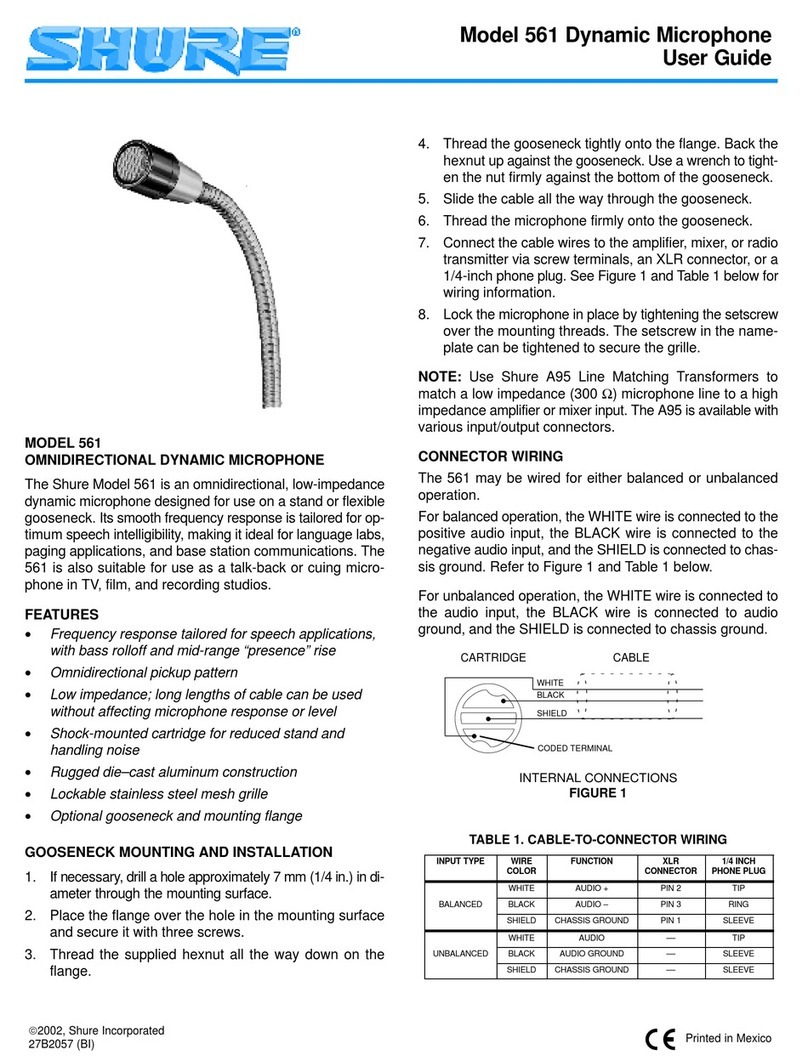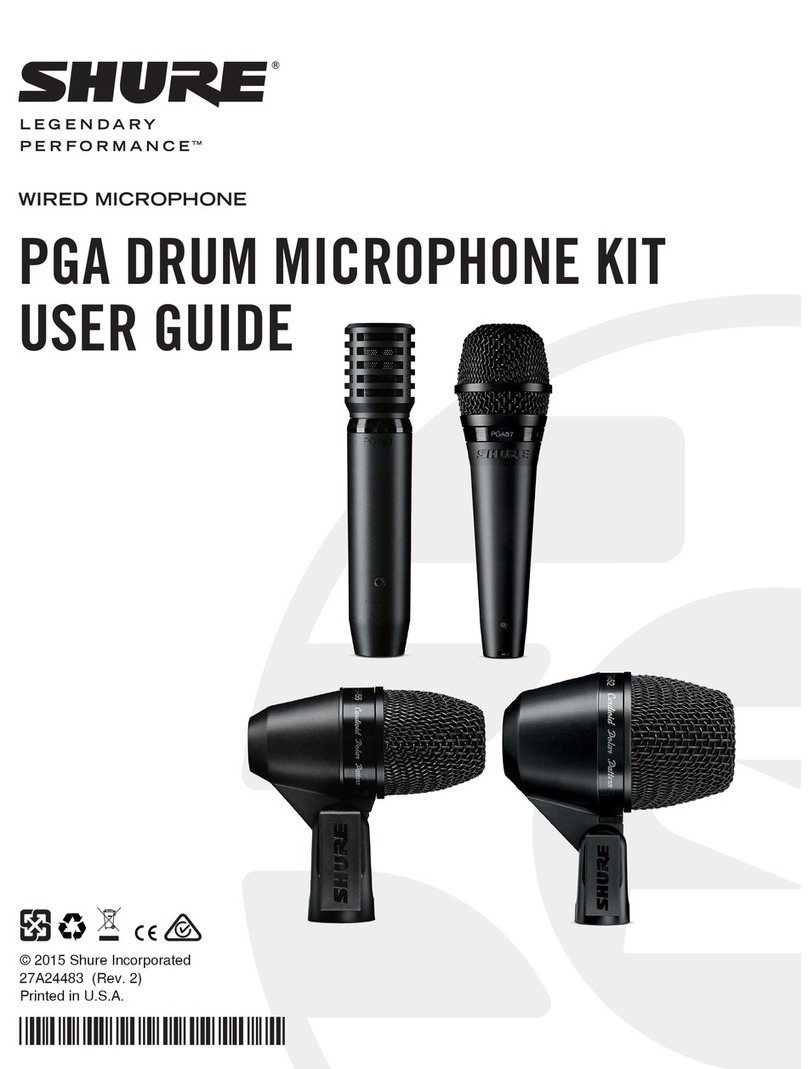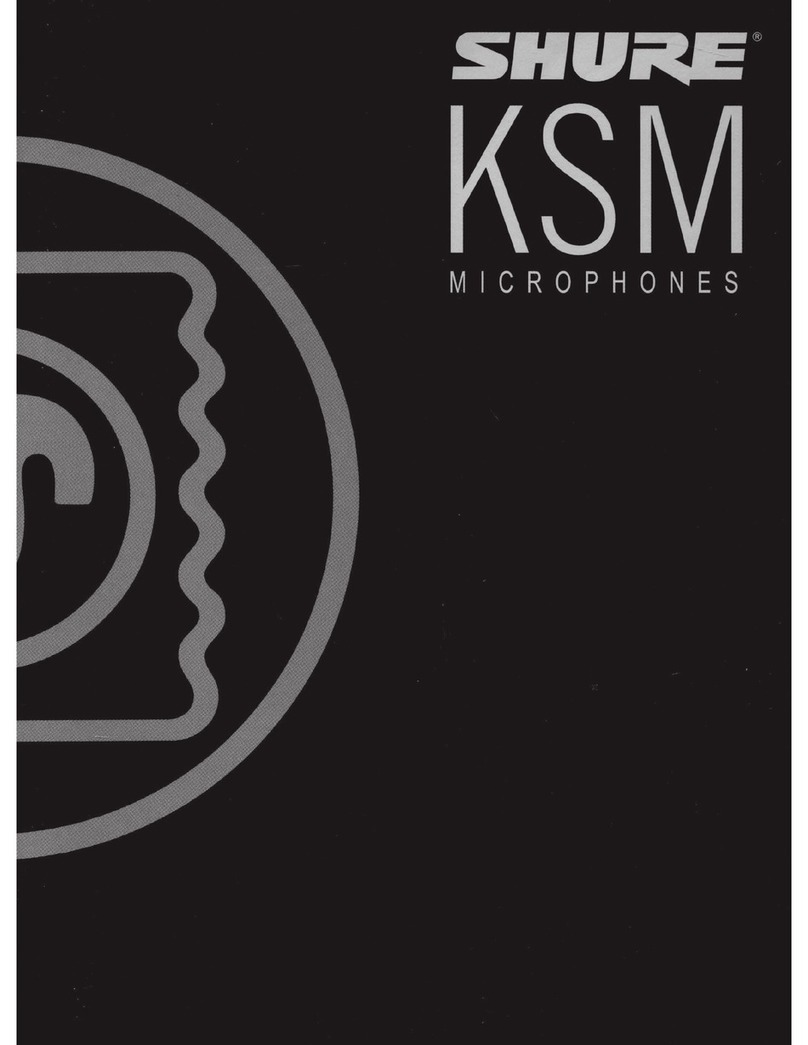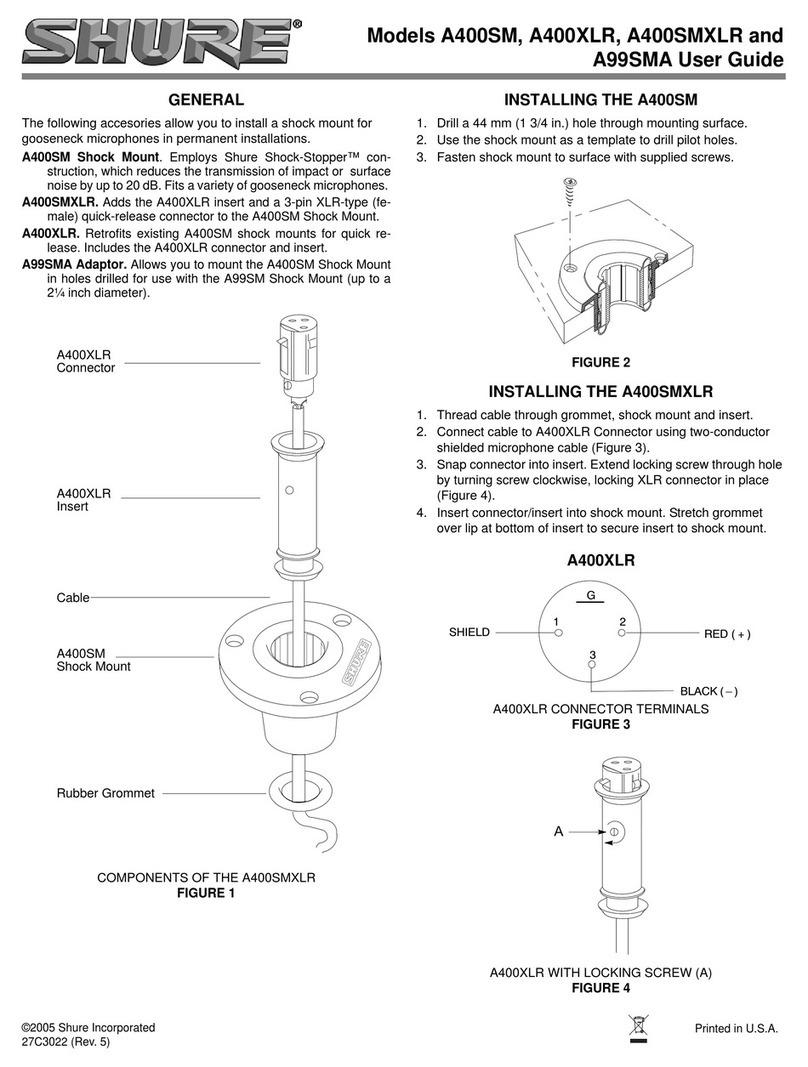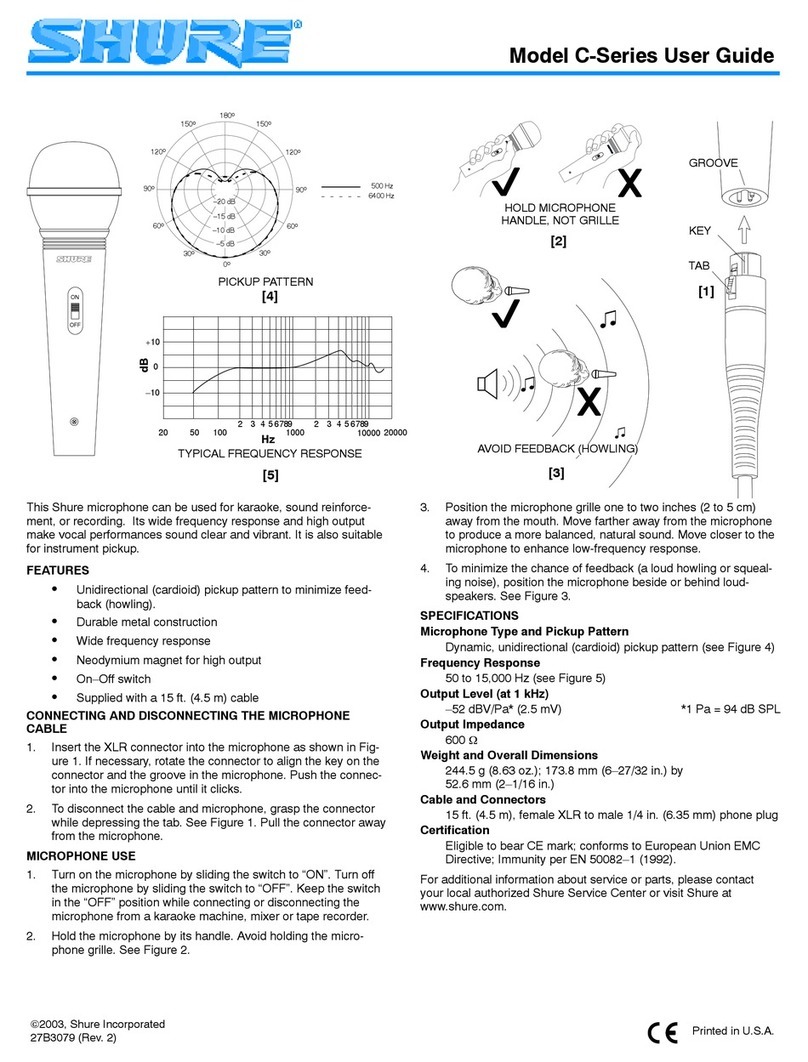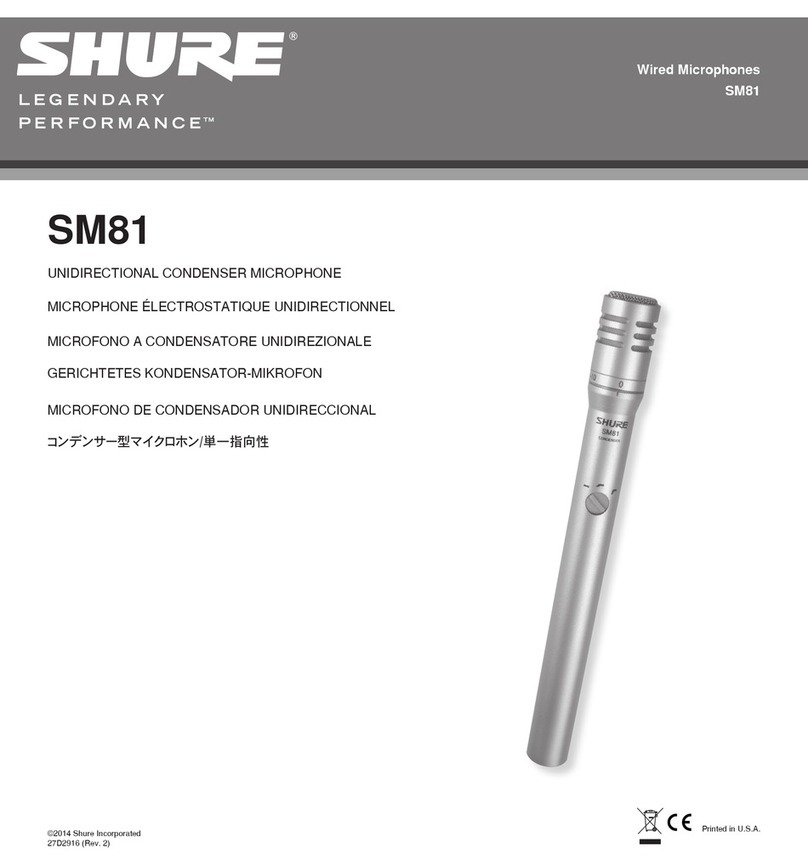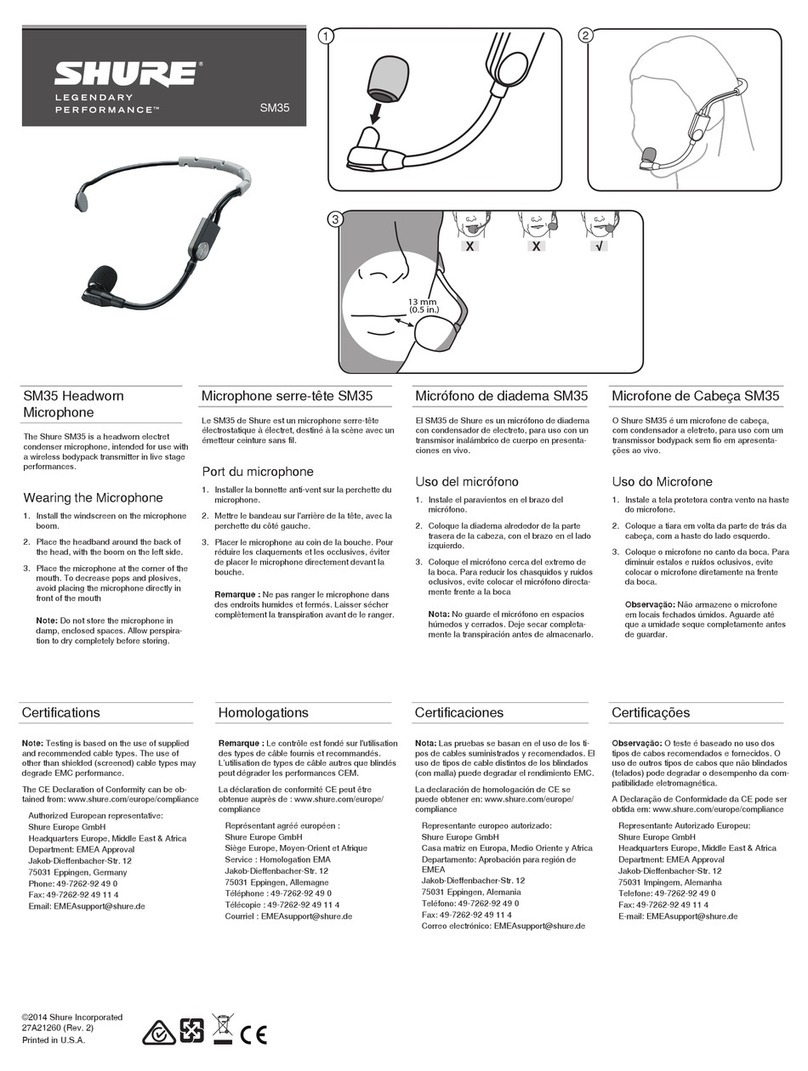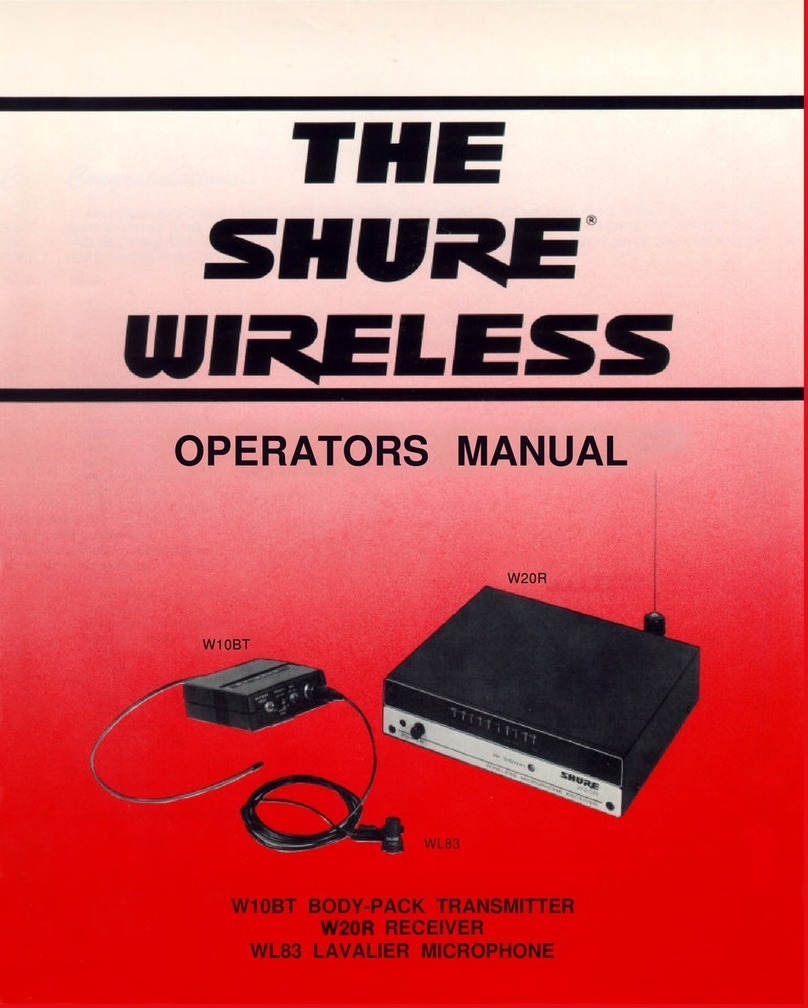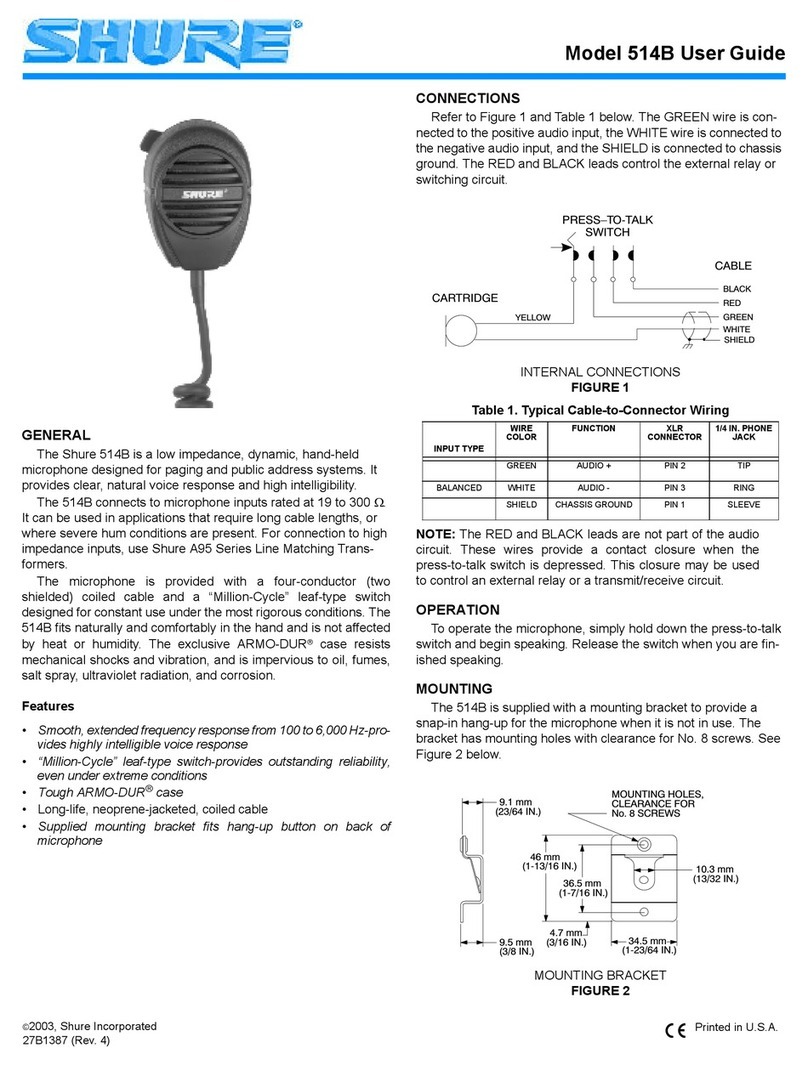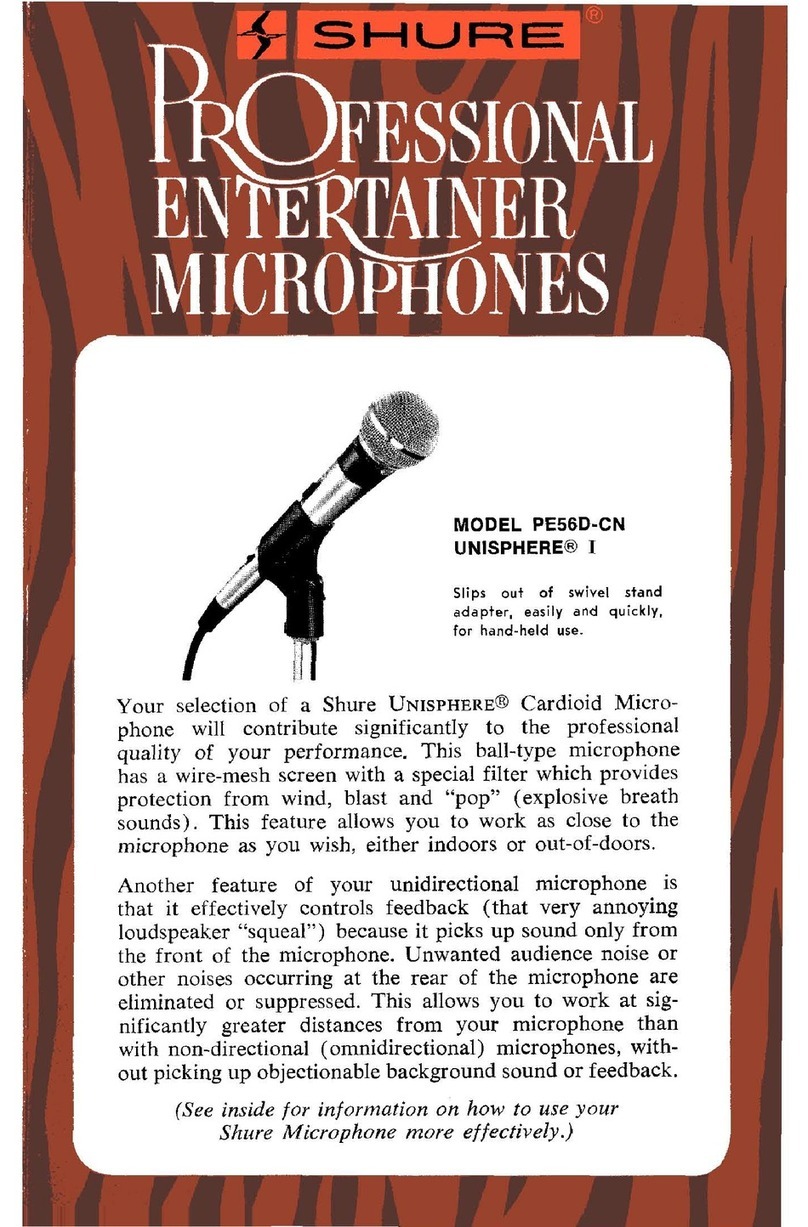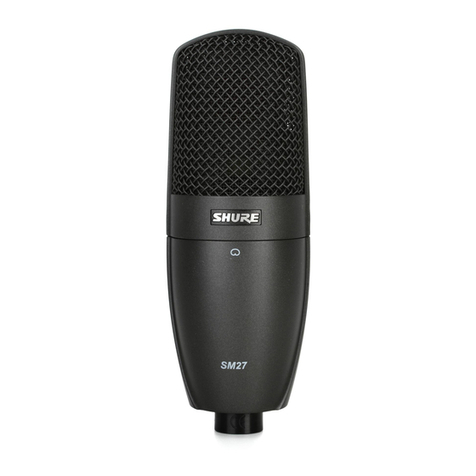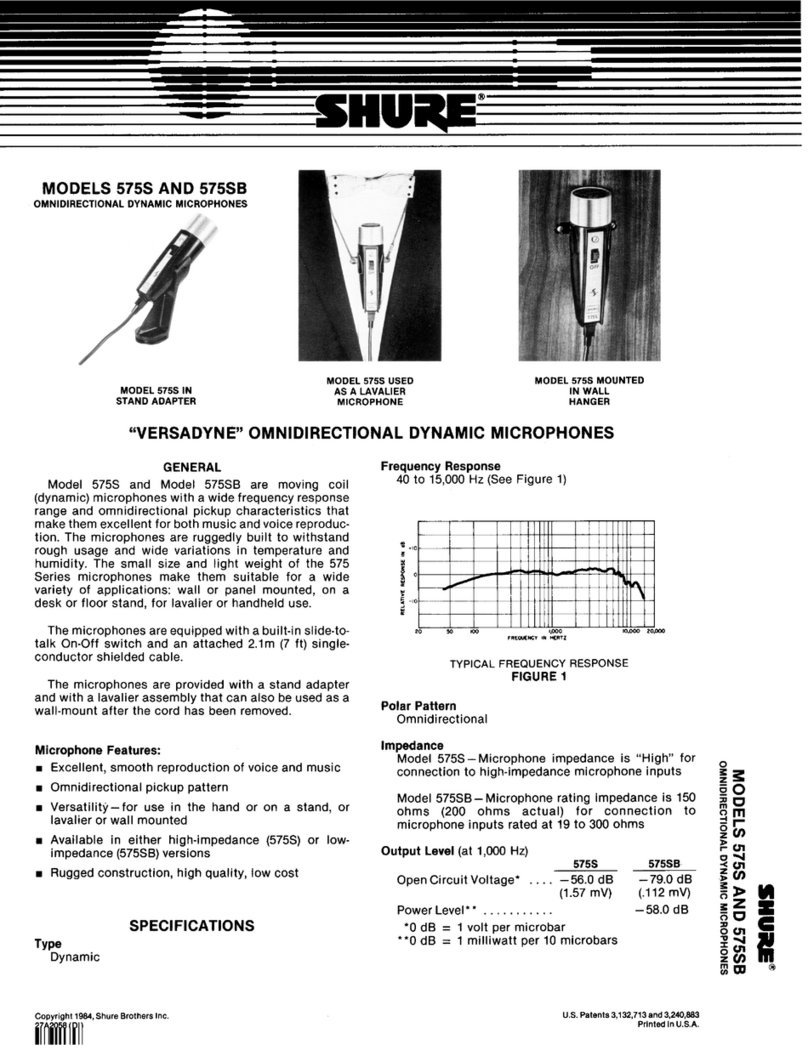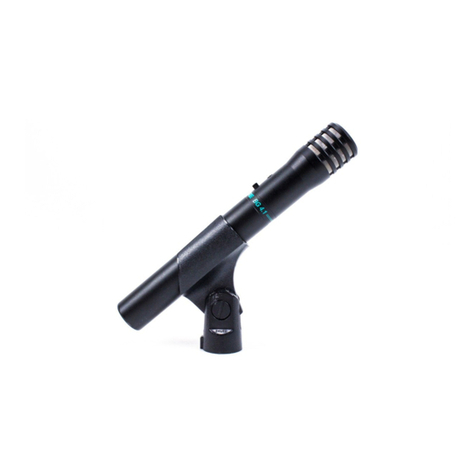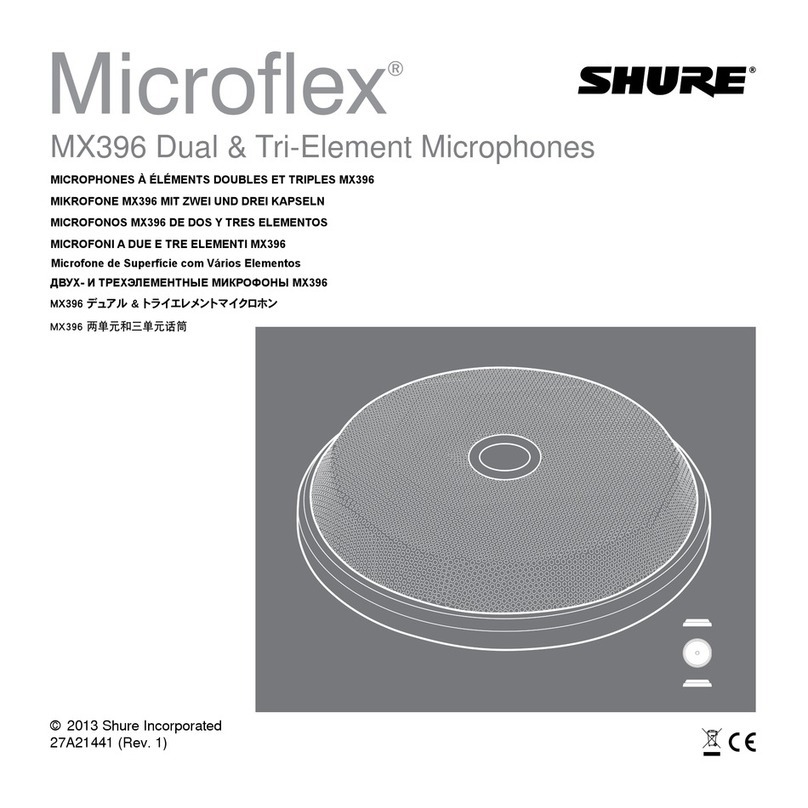
9
MICROFONO CARDIOIDE A CONDENSATORE
SM86
Lo Shure SM86 è un microfono cardioide a condensatore, unidi-
rezionale, per uso vocale, progettato appositamente per perfor-
mance professionali dal vivo. Estremamente robusto, l’SM86 offre
un suono di qualità da studio di registrazione pur nelle difficili condi-
zioni di ripresa del suono sul palcoscenico. La risposta in frequenza
è stata studiata per riprodurre nitidamente i suoni vocali. La caratte-
ristica di ripresa cardioide isola la sorgente sonora principale e al
tempo stesso riduce al minimo il rumore di sfondo indesiderato. Il
supporto antivibrazione a tre punti, incorporato, riduce i disturbi ge-
nerati maneggiando il microfono, mentre il filtro antischiocco a due
stadi attutisce il rumore del vento e della respirazione. L’SM86 è
una scelta eccellente per l’uso sia con i sistemi di monitoraggio sul
palcoscenico che con i sistemi di monitoraggio con auricolari.
Caratteristiche
wCapsula a condensatore, per un suono di qualità da studio di
registrazione.
wRisposta in frequenza studiata per riprodurre nitidamente i
suoni vocali.
wCostruzione robusta, adatta alle difficili condizioni di ripresa
del suono sul palcoscenico.
wCaratteristica di ripresa cardioide che riduce al minimo il ru-
more di sfondo indesiderato.
wUna scelta eccellente per l’uso con sistemi di monitoraggio sul
palcoscenico e con auricolari.
wSupporto antivibrazione a tre punti incorporato che riduce i
disturbi generati maneggiando il microfono.
wFiltro antischiocco a due stadi, che attutisce i rumori del vento
e della respirazione.
EFFETTO DI PROSSIMITÀ
I microfoni unidirezionali, come l’SM86, amplificano progressi-
vamente le frequenze basse fino a 15 dB man mano che si avvicina
il microfono alla sorgente sonora. Si può sfruttare questo fenome-
no, noto come effetto di prossimità, per creare un suono più caldo
e potente. Per prevenire suoni “esplosivi” a bassa frequenza quan-
do il microfono è molto vicino alla sorgente sonora, la risposta
dell’SM86 presenta un’attenuazione graduale alle basse frequen-
ze. Si ottiene così un controllo migliore e si sfrutta più facilmente
l’effetto di prossimità.
APPLICAZIONI E COLLOCAZIONE
L’SM86 èideale nei casi in cui si porta il microfono molto vicino alla
sorgente sonora. Può essere tenuto in manoo fissato aun sostegno.
Nella tabella seguente sono elencate le applicazioni più comuni
dell’SM86 e suggerimenti su come collocarlo nei vari casi. Tenete
presente che non esiste un metodo “giusto” per disporre i microfoni;
la loro collocazione dipende soprattutto dalle preferenze personali.
POSIZIONE SUGGERITA PER IL
MICROFONO QUALITÀ DEL SUONO
Con la bocca a meno di 15 cm di
distanza oppure a contatto
dell’antivento, in asse con il
microfono.
Suono robusto, enfasi dei toni
bassi, massimo isolamento
dalle altre sorgenti.
A una distanza compresa tra 15 e 60
cm dalla bocca, appena sopra il livello
del naso.
Riduzione dei toni bassi.
A una distanza superiore a 60 cm. Suono meno percettibile, più
distante; livelli notevoli di suo-
no dell’ambiente.
COLLOCAZIONE DI UN SISTEMA DI MONITORAGGIO SUL
PALCOSCENICO E DEGLI ALTOPARLANTI PER IL PUB-
BLICO
Collocate il sistema di monitoraggio direttamente dietro il micro-
fono (vedi Figura 1) e gli altoparlanti rivolti in direzione opposta alla
parte posteriore del microfono, in modo da ridurre notevolmente la
possibilità di generare feedback. Prima di uno spettacolo verificare
sempre che la disposizione del microfono e del sistema di monito-
raggio sia quella ottimale.
180°
90°
0°
90°
SISTEMA DI MO-
NITORAGGIO SUL
PALCOSCENICO
ALTOPARLANTI PER
IL PUBBLICO
MICROFONO SORGENTE
SONORA
COLLOCAZIONE DEL MICROFONO CARDIOIDE
FIGURA 1
REGOLE GENERALI PER L’USO DEL MICROFONO
1. Rivolgete il microfono verso la sorgente sonora prescelta e lon-
tano dalle sorgenti indesiderate.
2. Mantenete il microfono alla distanza adatta dalla sorgente so-
nora prescelta.
3. Per ottenere un aumento della risposta alle basse frequenze,
tenete il microfono vicino alla sorgente sonora.
4. Adoperate un solo microfono per ciascuna sorgente sonora.
5. La distanza fra i microfoni deve essere almeno tre volte mag-
giore della distanza fra ogni microfono e la sorgente sonora.
6. Usate il minimo numero di microfoni possibile.
7. Collocate i microfoni lontano da superfici che riflettono i suoni.
8. Se usate il microfono all’aperto, usate un antivento.
9. Muovete il microfono il meno possibile, per ridurre al minimo il
rumore di natura meccanica.
FUNZIONAMENTO
Alimentazione
L’SM86 richiede alimentazione phantom, applicabile mediante
un alimentatore esterno (quale lo Shure modello PS1A) o diretta-
mente tramite preamplificatori, mixer o consolle che incorporino
circuiti di alimentazione phantom. Un impianto adatto deve fornire
una tensione phantom compresa tra 11 e 52 V c.c.
Impedenza
Vi suggeriamo di usare un’impedenza di carico pari ad almeno
600 Ohm. Il carico può essere inferiore, fino a 150 Ohm, ma ne ri-
sulterà una riduzione dei livelli del segnale e di clipping in uscita.

